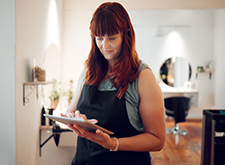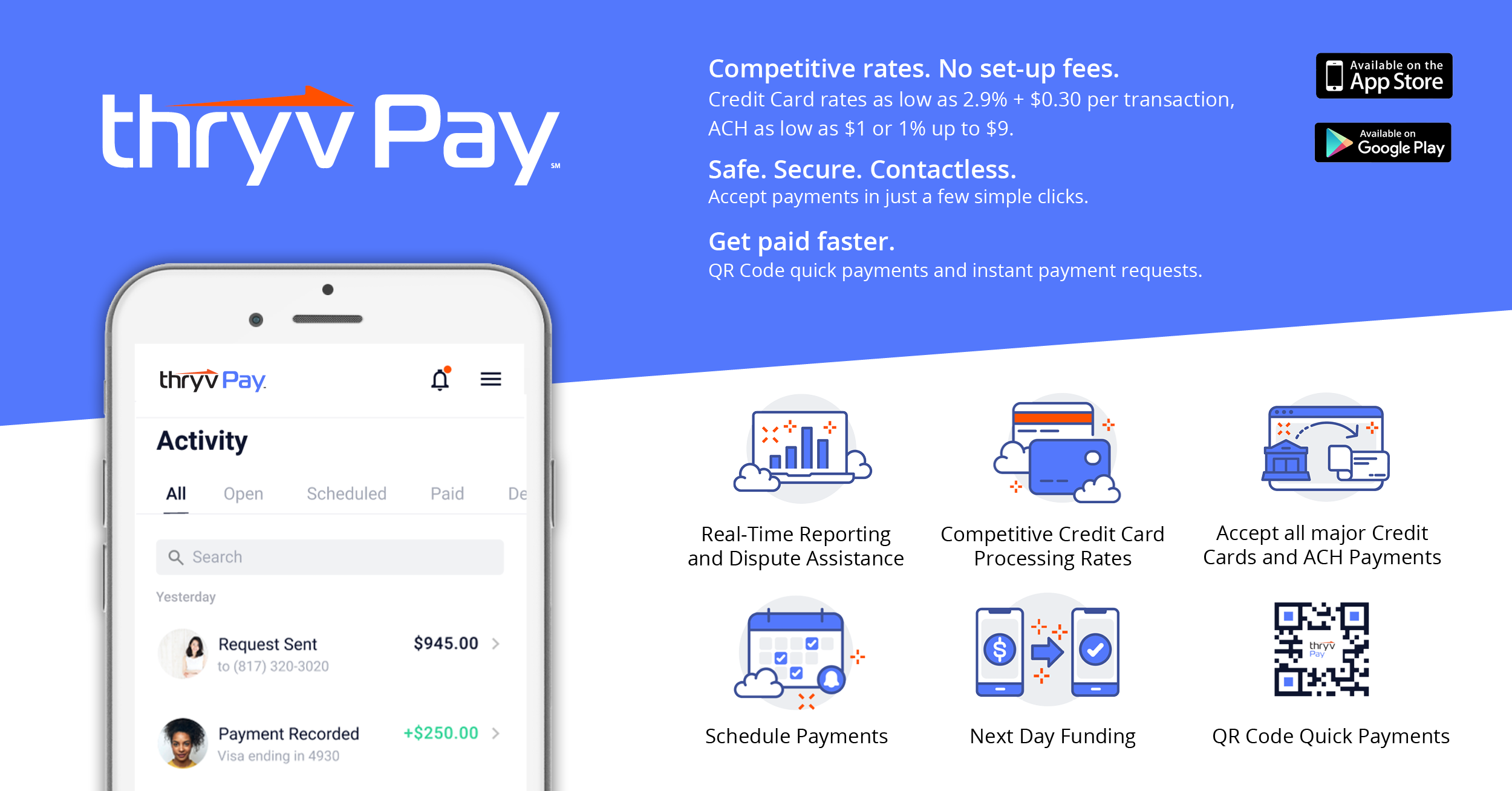After nearly a year of maintaining a 6-foot personal bubble, people are excited for some contact. But while social distancing may shift away from the limelight, the adoption of some technologies and processes are here to say.
Here are some contactless trends that won’t be socially distancing from small businesses post-pandemic.

The Guide to Winning More Business Online
DownloadLet Customers Stay in Their Cars with Curbside
According to Capgemini Research Institute, 77% of consumers say they’ll be more cautious about cleanliness, health and safety post-pandemic. It’s no wonder we expect many contactless, pandemic workarounds to stick around. One of those trends being curbside pick-up.
As physical distancing took effect early last year, many businesses scrambled to adjust their business models. Breweries to doctors’ offices changed the way they interacted with customers to abide by fluid health and safety guidelines. Sometimes this meant allowing patrons to stay in their cars with curbside service.
One of the ways businesses have managed this transition to curbside pick-up is through SMS text messaging. Following an online order, customers can simply text a business to let them know they’ve arrived to pick up their order. An employee then delivers the order straight to the customer’s car. Simple as that.
Curbside is widely associated with online grocery orders. But its versatility makes it attractive to many small businesses. Here are some creative ways curbside is being leveraged:
- Doctors’ offices administer COVID tests and other quick tests in the parking lot to prevent crowded waiting rooms.
- It’s hard to socially distance with a hyper pup. Instead, some doggy-daycare facilities will come out to your car to grab your dog when you arrive. Text them when you’re back to pick up your fur baby, and they’ll walk them back out to your car.
- Instead of long lines for limited releases, breweries are letting patrons order online and pick up their special brews curbside.
Curbside offerings provide customers the convenience of ordering online and a quick turn-around time for picking orders up. But it can also be profitable. Curbside pick-up can reduce shipping costs and cut down on service fees charged by third-party delivery services.
As we distance ourselves from the pandemic, curbside pickup will continue to provide the safety, efficiency and convenience customers are looking for. If you haven’t designated a parking space for curbside pick-up, now’s the time.
Help Your Customers Become DIY Kings and Queens
If you didn’t learn something new this past year, did you even pandemic? From learning to cook to DIY crafts, over the last year people have gotten pretty good at doing things themselves.
Many product and service-based businesses alike have found ways to enable their patrons to continue to use their services in a DIY fashion. For example:
- Bakeries are selling DIY cookie kits complete with shaped cookies, royal icing and sprinkles in a variety of colors. Customers can then decorate and enjoy the special treat.
- In a similar fashion, estheticians curate custom at-home facial packages. This way customers get the personalized facials that they love from the comfort — and safety — of their own home.
- Home improvement professionals have begun offering guided tutorials for fix-it-yourself house projects.
Not only have these companies found a way to keep their business afloat, they’ve also opened up a new market post-pandemic. The novelty and convenience provided by these DIY options will still be in demand.
Fit Your Events into Your Customers’ Lives
Virtual offerings exploded into fashion due to the pandemic. However, consumers who have adapted to virtual classes, appointments and happy hours aren’t likely going to quit cold turkey. Rather, virtual events are here to stay.
After we’ve been given the all-clear on the pandemic, virtual events like classes, workshops or webinars will co-exist with traditional in-person offerings.
This is due to the ability of virtual events to provide people more than just safety. They also provide convenience and efficiency. (Are you seeing a trend here?) Think of virtual as the curbside pick-up or delivery of your service-based offering.
For example, in the medical field, 76% of patients say they would prefer to continue using Telehealth moving forward when an in-person visit isn’t necessary.
Some great examples of virtual offerings, that aren’t telehealth appointments include:
- Gyms and fitness centers are developing on-demand fitness classes that complement their in-gym programs.
- Small businesses of all kinds are jumping on the virtual learning trend. Dog training, yep. Candle making, of course. Plant care, uh-huh!
You may be wondering why some businesses would need to continue these virtual offerings post-pandemic.
Consider this: Many companies have become fully remote organizations, spreading team members out across the county and beyond. Virtual experiences developed due to the pandemic, like escape rooms, can now be used to cater to the need to connect teams.
One of the biggest benefits to continuing to offer virtual is that it opens your business up to customers outside of your typical geographic area.
Make It Easy for Your Customers to Spend
Alternative ways to pay were becoming commonplace pre-pandemic. Nevertheless, social distancing increased the speed at which your average consumer switched from cash to credit. According to research by the National Retail Federation, contactless payments have increased by 69%.
If you haven’t already incorporated contactless payment options into your business operations, now is the time to do so. Customers don’t want to have to search for correct change. In fact, more than half of American consumers are already using some form of contactless payments.
Here’s how businesses are incorporating contactless payments into their day-to-day:
- In lieu of a traditional paper receipt, many businesses are sending receipts and asking for payment right to their customer’s phones. With Thryv’s pay by SMS text feature, clients can settle up right from the palm of their hand.
- Checks may feel like relics of a time gone by, but small businesses understand that some folks would rather pay through their checking account. Thryv users can accommodate them by allowing customers to pay online (via ACH) with ThryvPay‘s payment processor.
Consider this, it’s more than just allowing your customers to pay via a contactless method. In addition to letting them pay online, a robust CXM platform, like Thryv, can enable business owners to digitally share and approve quotes.
While COVID made contactless payments a necessity, customers have become accustomed to the convenience and won’t be willing to go back to the way things were.
Plus, according to a report from Bain & Co., people who use mobile payments spend almost twice as much money.
Contactless is Here to Stay
For post-COVID survival, it is critical for small businesses to focus on safety, convenience and efficiency. Adopting a client experience platform, like Thryv, can enable small business owners to provide a contactless experience for new and existing clientele.





